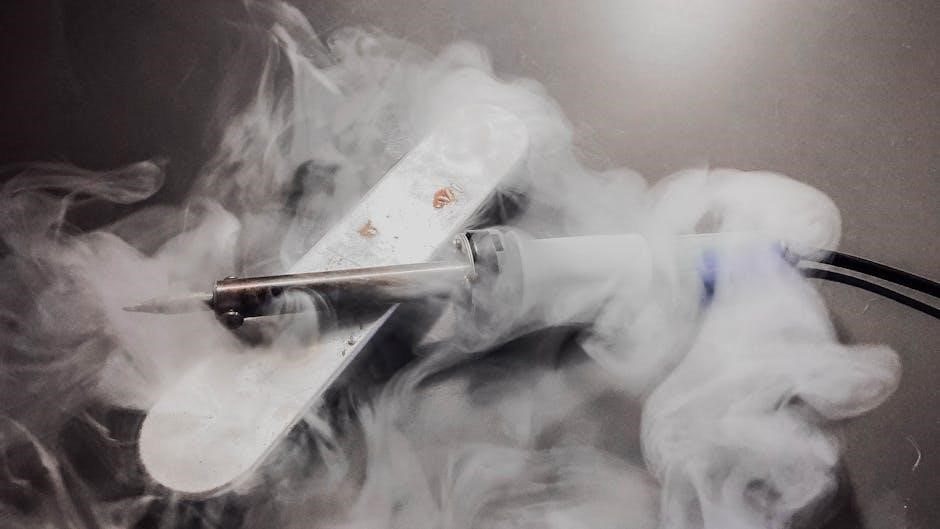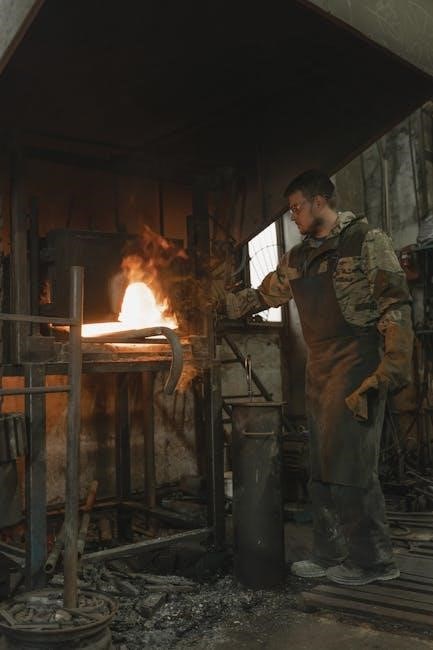first alert smoke co detector manual
Welcome to the First Alert Smoke & CO Detector Manual. This guide provides essential information for installing‚ maintaining‚ and troubleshooting your detector to ensure safety and compliance with regulations.
1.1 Overview of the Detector and Its Importance
The First Alert Smoke & CO Detector is a critical safety device designed to protect households from potential fire and carbon monoxide hazards. It combines advanced smoke and CO detection technologies to provide early warnings‚ ensuring timely evacuation and preventing tragedies. The detector is engineered to meet rigorous safety standards‚ including UL 217‚ and is compatible with other First Alert units for interconnected systems. Its importance lies in its ability to detect dangerous conditions before they escalate‚ offering peace of mind for families. Proper installation‚ maintenance‚ and understanding of its features are essential to maximize its effectiveness. This manual serves as a comprehensive guide to help users optimize their detector’s performance and ensure compliance with safety regulations.
1.2 Purpose of the Manual
This manual is designed to provide users with comprehensive guidance on the installation‚ operation‚ and maintenance of the First Alert Smoke & CO Detector. It serves as a detailed resource to ensure the device functions optimally‚ offering step-by-step instructions and troubleshooting tips. The manual aims to help users understand the detector’s features‚ comply with safety standards‚ and maximize its effectiveness in protecting their homes and families. By following the guidelines outlined in this manual‚ users can ensure their safety and the proper functioning of the detector. This document is intended to be a user-friendly reference‚ addressing common questions and providing clarity on all aspects of the device’s use and maintenance.

Features of the First Alert Smoke & CO Detector
The First Alert Smoke & CO Detector features advanced detection technology‚ latching alarm indicators‚ peak CO level memory‚ and maintenance alerts for enhanced safety and convenience.
2.1 Types of Detection (Smoke and CO)
The First Alert Smoke & CO Detector offers dual-function detection‚ identifying both smoke and carbon monoxide (CO) in a single unit. Smoke detection utilizes photoelectric sensors to detect visible particles released during fires‚ providing early warnings for both fast-flaming and smoldering fires. CO detection employs electrochemical sensors to monitor for dangerous levels of odorless‚ invisible carbon monoxide‚ which can be deadly in high concentrations. This dual capability ensures comprehensive protection against two of the most common household threats. By combining smoke and CO detection‚ the device streamlines home safety‚ reducing the need for multiple alarms while ensuring continuous monitoring. Its advanced sensors provide accurate and reliable alerts‚ helping to prevent potential disasters and safeguard occupants effectively.
2.2 Interconnectivity with Other Units
The First Alert Smoke & CO Detector supports interconnectivity‚ allowing it to link with other compatible detectors in your home. This feature ensures that if one unit detects smoke or CO‚ all interconnected units will sound the alarm‚ providing comprehensive coverage. Wired interconnection uses a dedicated wire to connect units‚ while wireless models rely on radio communication for a seamless setup. This interconnected system enhances safety by ensuring alarms are heard throughout the house‚ even if the danger is detected far from the source. The manual provides detailed instructions for setting up interconnected systems‚ ensuring proper configuration and reliable performance. This feature is especially beneficial in larger homes‚ offering an integrated safety network that keeps everyone informed and protected.
2.3 Battery and Power Options
The First Alert Smoke & CO Detector offers flexible power options to ensure continuous protection. It can be hardwired into your home’s electrical system for a reliable power source‚ with a battery backup to maintain operation during power outages. Some models also support wireless installation using long-lasting lithium batteries‚ eliminating the need for wiring. For battery-powered units‚ it is recommended to use high-quality alkaline batteries and replace them annually or when the low-battery alert sounds. The detector also features a battery compartment with a secure lock to prevent unauthorized tampering. Proper battery maintenance is crucial for ensuring the device functions correctly. Always follow the manufacturer’s guidelines for battery replacement and recycling. This ensures your safety and compliance with environmental regulations.
2.4 Certifications and Compliance
The First Alert Smoke & CO Detector is designed to meet or exceed industry standards for safety and performance. It is certified by Underwriters Laboratories (UL) to UL 217 for smoke detectors and UL 2034 for carbon monoxide detectors‚ ensuring reliability and effectiveness. The device also complies with local and national regulations‚ making it suitable for installation in residential and commercial settings. Additionally‚ it meets the requirements of the International Residential Code (IRC) and the National Fire Protection Association (NFPA) standards. The detector undergoes rigorous testing to ensure it detects smoke and CO accurately and provides timely alerts. Always verify that your detector meets local building codes and regulations before installation. Proper compliance ensures your safety and legal requirements are fulfilled.

Installation Guidelines
Proper installation ensures optimal performance and safety. Choose locations carefully‚ avoiding areas near vents or direct sunlight. Follow manufacturer instructions for mounting and wiring. Use provided hardware for secure installation. Ensure power sources are correctly connected for hardwired models. Test the detector post-installation to confirm functionality. Always refer to local building codes for specific requirements. Correct installation is crucial for reliable smoke and CO detection.
3.1 Planning the Installation
Planning the installation is crucial for optimal performance. Identify locations for detectors on every level of your home‚ ensuring compliance with local regulations. Smoke and CO detectors should be placed outside sleeping areas‚ in hallways‚ and near living spaces. Avoid areas near vents‚ direct sunlight‚ or extreme temperatures. Consider the layout of your home to ensure comprehensive coverage. For interconnected systems‚ plan the wiring or wireless connections in advance. Check local building codes for specific requirements‚ such as detector spacing and placement in garages or basements. Proper planning ensures safety‚ reliability‚ and adherence to regulations. Take note of power sources and mounting options to streamline the process. Always prioritize areas where hazards are highest for maximum protection.
3.2 Step-by-Step Installation Process
Begin by unpacking the detector and reading the manual thoroughly. Choose the installation location based on your earlier planning‚ ensuring compliance with safety standards. For wall-mounted units‚ mark the spot for drilling‚ typically 4-12 inches from the ceiling. Use the provided template or bracket to guide accurate placement. Drill pilot holes and secure the mounting bracket firmly. Attach the detector to the bracket‚ ensuring it clicks into place. For hardwired models‚ connect the wires carefully‚ following the manual’s wiring diagram. For battery-powered units‚ insert the batteries correctly‚ ensuring the polarity matches. Test the detector using the test button to confirm proper function. Finally‚ clean the area and ensure all components are securely fastened.
3.3 Optimal Placement Locations
Place smoke and CO detectors on every level of your home‚ including basements and attics. Install smoke detectors inside and outside sleeping areas‚ at least 10 feet away from cooking appliances to minimize false alarms. For CO detectors‚ position them low on walls‚ as CO is slightly lighter than air. Avoid areas near fuel-burning appliances‚ direct sunlight‚ or drafts. Ensure detectors are at least 6 feet away from windows and doors. In large rooms‚ install additional units to cover all areas effectively. Always follow local regulations and manufacturer guidelines for placement. Proper positioning ensures accurate detection and timely alerts‚ enhancing home safety; Use the included mounting hardware for secure installation. Test detectors after placement to confirm functionality.
3.4 Setting Up Interconnected Systems
Interconnected systems provide whole-home protection by linking multiple smoke and CO detectors. Hardwire detectors using 18 AWG or 18/2 wire‚ ensuring all units are compatible. Connect the wires to the designated terminals on each detector‚ following the manufacturer’s wiring diagram. Secure all connections tightly to avoid signal loss. For wireless interconnectivity‚ press and hold the test button on one unit until it beeps‚ then repeat on others to sync. Test the system by triggering one detector to ensure all units alarm. Avoid wiring issues or incompatible models‚ as this can disrupt interconnectivity. Always follow local codes and manufacturer instructions for setup. Proper synchronization ensures seamless communication between detectors‚ enhancing safety and response time. Regularly test interconnected systems to confirm reliability.

Maintenance and Troubleshooting
Perform routine cleaning of sensors and test alarms monthly. Replace batteries annually or when low-battery signals occur. Check error codes for troubleshooting guidance. Resolve connectivity issues promptly.
4.1 Routine Maintenance Tasks
Regular maintenance ensures optimal performance of your First Alert Smoke & CO Detector. Test the alarm monthly by pressing the test button. Clean the detector using a soft brush or vacuum to remove dust and debris‚ ensuring sensors function accurately. Inspect the unit for physical damage or wear. Replace the battery annually‚ even if it seems functional‚ to prevent sudden failures. Check the expiration date on the detector‚ typically found on the back‚ and replace it every 10 years as required. Avoid exposing the detector to contaminants like paint fumes or insecticides. Keep records of maintenance activities for compliance with safety regulations. Regular upkeep helps maintain reliability and ensures continuous protection for your home and family.
4.2 Replacing the Battery
To replace the battery in your First Alert Smoke & CO Detector‚ start by turning off the power supply. Remove the detector from its mounting bracket and open the battery compartment‚ usually located on the back. Gently pull out the old battery and discard it properly. Insert a new 9-volt alkaline battery‚ ensuring the terminals align correctly. Close the compartment and reattach the detector. Press the test button to confirm the alarm is functioning. Always use the recommended battery type for optimal performance. Avoid mixing old and new batteries. For hardwired models‚ ensure the backup battery is also replaced. Proper battery replacement is crucial for uninterrupted protection. Keep spare batteries on hand to avoid delays. Regular battery checks ensure your safety system remains reliable and responsive.
4.3 Troubleshooting Common Issues

If your First Alert Smoke & CO Detector is not functioning properly‚ start by identifying the issue. Common problems include false alarms‚ chirping sounds‚ or failure to detect hazards. For false alarms‚ check for dust‚ steam‚ or cooking fumes near the sensor. Clean the detector using a vacuum or soft brush. If the alarm chirps‚ it may indicate a low battery or faulty connection. Replace the battery or check the wiring for hardwired models. If the detector fails to respond during testing‚ ensure it is properly installed and free from obstructions. For interconnected systems‚ verify that all units are linked correctly. If issues persist‚ consult the manual or contact customer support. Regular maintenance and troubleshooting ensure reliable performance and safety. Always address problems promptly to maintain protection.

Compliance and Regulations
This section outlines the regulatory standards and legal requirements for the First Alert Smoke & CO Detector‚ ensuring compliance with safety laws and building codes nationwide.
5.1 Regulatory Standards (UL 217‚ etc.)
The First Alert Smoke & CO Detector complies with rigorous regulatory standards‚ including UL 217 for smoke detectors and UL 2034 for carbon monoxide alarms. These standards ensure the device meets strict safety and performance criteria. UL 217 specifies requirements for smoke detector sensitivity‚ reliability‚ and response time‚ while UL 2034 focuses on CO alarm accuracy and responsiveness to varying CO levels. The detector undergoes extensive testing to verify its ability to detect hazards accurately and alert occupants reliably. Compliance with these standards guarantees the product meets or exceeds industry benchmarks for safety and effectiveness. Adherence to these regulations is crucial for protecting lives and ensuring the detector functions as intended in emergency situations. Always verify certification marks to confirm compliance with these critical standards;
5.2 Local Building Codes and Requirements
Local building codes and requirements for smoke and carbon monoxide detectors vary by jurisdiction but are essential for ensuring safety. These codes often dictate the number of detectors needed‚ their placement‚ and specific features required for compliance. For example‚ some areas may mandate hardwired interconnected systems or additional detectors in garages or basements. Users must consult their local building department or fire authority to understand specific requirements. Failure to comply with local codes can result in fines or safety risks. Always ensure the First Alert Smoke & CO Detector meets local regulations‚ as these may exceed national standards. Proper installation and configuration are critical to satisfy both local and national safety guidelines‚ ensuring optimal protection for occupants. Verify local codes before installation to avoid non-compliance issues. This step is crucial for maintaining safety and legal adherence.

Special Features
The First Alert Smoke & CO Detector features smart technology integration for voice alerts and mobile notifications. It includes a latching alarm indicator‚ hush button‚ and energy-efficient design.
6.1 Smart Technology Integration
The First Alert Smoke & CO Detector offers advanced smart technology integration‚ enabling seamless connectivity to your home network. This feature allows for voice alerts through compatible smart speakers and real-time notifications sent directly to your smartphone. By downloading the First Alert app‚ users can monitor detector status‚ receive emergency alerts‚ and silence alarms remotely. The detector is compatible with popular smart home platforms‚ enhancing its functionality within a connected ecosystem. This integration ensures heightened safety and convenience‚ providing peace of mind whether you’re at home or away. The smart technology also supports interconnectivity with other First Alert devices‚ creating a unified safety network. This feature is particularly useful for multi-level homes or larger spaces‚ ensuring alerts are received promptly and reliably. The detector’s smart capabilities are designed to enhance user experience and safety without compromising ease of use.
6.2 Latching Alarm Indicator
The First Alert Smoke & CO Detector features a latching alarm indicator‚ designed to provide clear and persistent notification of an alarm event. This feature visually identifies which unit in an interconnected system initially detected smoke or carbon monoxide. A visual indicator‚ such as an LED light‚ remains active until manually reset‚ ensuring users can quickly locate the source of the alert. This is particularly useful in multi-unit installations‚ where pinpointing the affected detector is crucial. The latching alarm enhances safety by eliminating guesswork during an emergency‚ allowing for faster response. This feature is a key component of the detector’s design‚ ensuring reliable and user-friendly operation. It also meets safety standards‚ making it a vital part of the overall protection system. The latching indicator is simple to use and provides peace of mind for homeowners.

User Resources

- Access to the full manual online for detailed instructions.
- Customer support available for troubleshooting and inquiries.
- Additional safety guides for comprehensive protection.
7.1 Accessing the Full Manual
The full manual for the First Alert Smoke & CO Detector is readily available on the manufacturer’s official website. Users can download it free of charge in PDF format‚ ensuring easy access to detailed instructions and guidelines. The manual can be found in the “Support” or “Resources” section of the website. To locate it‚ simply search for the specific model number or product name in the search bar provided. This comprehensive guide includes installation steps‚ maintenance tips‚ and troubleshooting advice. Additionally‚ the manual is regularly updated to reflect the latest safety standards and product features. By accessing the full manual‚ users can ensure they are using their detector optimally and staying informed about its capabilities and proper care.
7.2 Customer Support and Assistance
First Alert provides dedicated customer support to assist users with any questions or concerns regarding their Smoke & CO Detector. Support is available through multiple channels‚ including phone‚ email‚ and live chat‚ ensuring prompt resolution of issues. The customer service team is well-trained to address queries related to installation‚ maintenance‚ and troubleshooting. For added convenience‚ support is available in multiple languages to cater to a diverse user base. Additionally‚ the First Alert website offers an extensive support center with FAQs‚ user manuals‚ and troubleshooting guides. Users can also access video tutorials and interactive guides for a better understanding of their detector’s features. Reaching out to customer support is highly recommended for any unresolved issues to ensure optimal performance and safety. Visit the official website for contact details and additional resources.
7.3 Additional Safety Guides
To enhance safety and understanding‚ First Alert offers additional resources beyond this manual. These guides provide detailed insights into smoke and CO safety‚ including tips for detector placement‚ emergency preparedness‚ and alarm response. Available on the First Alert website‚ these materials are designed to complement the manual and ensure comprehensive safety knowledge. Users can access downloadable PDF guides‚ video tutorials‚ and infographics that cover topics like seasonal safety tips and understanding alarm patterns. These resources are regularly updated to reflect the latest safety standards and best practices. By reviewing these guides‚ users can optimize their detector’s performance and improve overall home safety. Visit the official First Alert website to explore these additional safety resources and stay informed.

About the Manufacturer
First Alert is a trusted leader in home safety products‚ specializing in smoke detectors‚ carbon monoxide alarms‚ and other safety devices. With decades of experience‚ the company has built a reputation for reliability‚ innovation‚ and quality. First Alert is committed to developing products that meet the highest safety standards while providing ease of use and advanced features. Their dedication to research and development ensures they stay at the forefront of safety technology. First Alert products are widely recognized for their effectiveness in protecting homes and families from potential threats. By prioritizing customer safety and satisfaction‚ First Alert continues to be a preferred choice for households worldwide. Their mission is to empower individuals with the tools and knowledge to create safer living environments.
